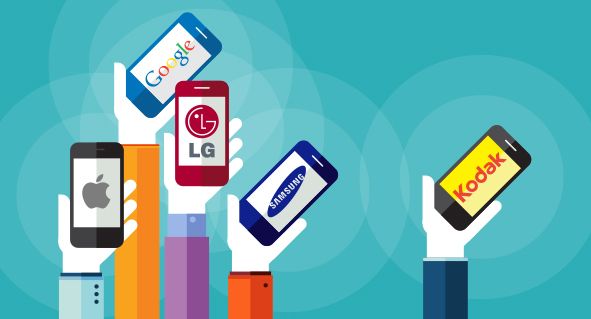BY CHRISTOPHER CAEN
Theory Associates
www.theoryassociates.com
This month has been filled with the expected deluge of press announcements for companies launching new products at next week’s Consumer Electronics Show (CES) in Las Vegas. This year the feverish pronouncements include all the usual suspects: televisions, smart homes, wearables, mobile audio, and of course phones.
It’s the phones where we find a curious name popping up. For the first time in three years, Kodak is returning to the floor of CES. Now, this storied brand is still churning out image and reproduction products as it struggles to recover from its bankruptcy that was only two years ago. A jaunt over to their website is like taking a stroll down memory lane, with the familiar red and yellow livery and a parade of printers across the home page.

As such, their foray into phones and tablets is puzzling, to say the least. The company has worked its way back from Chapter 11 by licensing the name aggressively and selling off unprofitable or non-core businesses. But one has to wonder if this attempt to create a new revenue stream may be problematic. And it is not the obvious question of whether yet another phone brand can carve out enough market share and margin to make a measurable impact on the bottom line.
The concern is more with the brand. On the plus side, Kodak has decades of brand equity, stretching all the way back to their beginnings in 1888. On the other side, Kodak is also well known as the company that completely missed the boat as imaging started going digital and film sales dropped dramatically. As such, they are not exactly renown for setting the pace when it comes to technology.
It all comes down to meaning. When people think of branding, they immediately think of a logo, and this certainly is an important element of a company’s branding. But the meaning of that brand is the real core of what a company stands for, and what their meaning is in the world around them. This meaning is what a person ultimately invests in, and what turns them from a consumer into a zealot. Just ask Apple. Or Beats. Or the recent efforts by Cadillac to become a lifestyle brand. Or Incase.
Incase? Here is an interesting example of meaning. Incase is one of the industry leaders in the case market. Their products are well made and very stylish. The brand was firmly entrenched with these products. Then they went and launched a headphone line, the main product called the Sonic. This was in 2011, in the midst of the first round of the headphone wars, with Beats, Soul by Ludicrous, Monster, and others all battling away at retail. The InCase headphones were met with rave reviews from the critics, with Gizmodo commenting that “It looks like an awesome prototype design that never got destroyed by cheaper materials and dudes in suits.” So how did consumers react? Crickets.
The culprit was meaning. Incase had built their credibility and reason for being in cases and accessories. To suddenly appear with headphones without first explaining the “why” behind the effort was to leave the consumer grasping at straws. What was the need in the market they were fulfilling, or what was the part of the Incase DNA that would lead inevitably to headphones? Without the consumer knowing these reasons, there was nothing to grab onto, other than a nice set of headphones.
Kodak has the same problem. Oh sure, they updated their logo in 2006 to make it more contemporary, but why is Kodak getting into the mobile market, other than seemingly an attempt to get back on the train they missed before. What in the meaning of the Kodak Brand informs us of what a Kodak phone or tablet will look like? And what in their meaning leads us to believe this product has to come to market? Especially since they are entering one of the most competitive and saturated markets in consumer electronics.
People do not invest in what you do, they invest in why you do it. They invest in the mythology around Steve Jobs, the story of why Dr. Dre brought headphones to the market, and how Nest made the house smarter and easier to use. In order to get us as consumers to become believers in a Kodak mobile product, we have to become believers in Kodak’s beliefs. Unless that happens, Kodak may just find themselves stuck on the platform as another train leaves the station.
By Christopher Caen
Advertisement
Learn more about Electronic Products Magazine





